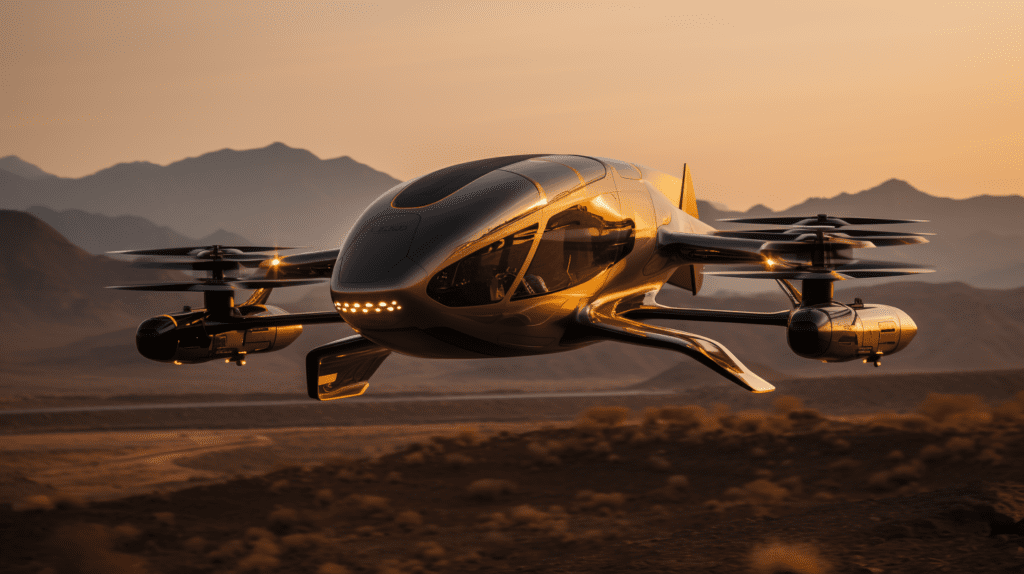Introduction: What is HS VTOL?
Defining HS VTOL
HS VTOL, which stands for High-Speed Vertical Takeoff and Landing, represents a radical departure from traditional aircraft. Unlike conventional planes that require a runway for takeoff and landing or helicopters that offer vertical lift but limited speed, HS VTOL aims to combine the best of both worlds. This technology promises to redefine the landscape of aerial transportation, offering swift, efficient, and flexible travel options.
The Genesis of HS VTOL
While the concept of vertical takeoff and landing is not new, attempts to increase the speed and efficiency of these aircraft have faced numerous engineering and logistical challenges. Advances in aerodynamics, materials science, and propulsion technologies have now made it feasible to develop aircraft capable of both high-speed flight and vertical takeoff and landing.
Why HS VTOL Matters
HS VTOL has the potential to revolutionize not just aviation but also various other sectors, such as logistics, emergency services, and even urban planning. By bypassing the need for runways, these aircraft can be deployed in a myriad of settings, providing unprecedented levels of accessibility and convenience.


Technological Foundations
Propulsion Innovations
One of the key elements that set HS VTOL apart is the innovative propulsion systems underpinning these aircraft. These systems often utilize hybrid engines that combine the thrust capabilities of jet engines with the vertical lift of rotors, facilitating both horizontal and vertical flight.
Advanced Aerodynamics
The design of HS VTOL aircraft necessitates a deep understanding of aerodynamic principles to ensure stability during both high-speed cruising and vertical takeoff/landing. Advanced computational modeling and wind tunnel tests have been instrumental in optimizing the aircraft design for both speed and stability.
Material Science Breakthroughs
The skin and structural components of HS VTOL aircraft often incorporate advanced materials like carbon-fiber composites and specialized alloys. These materials offer the strength needed to withstand high-speed flight while also being lightweight, thus improving fuel efficiency and overall performance.
Applications and Use-Cases
Emergency Services
HS VTOL technology can be a game-changer for emergency services, offering rapid response times and unparalleled maneuverability. Imagine a search and rescue mission in challenging terrains where time is of the essence; HS VTOL can easily navigate these situations, potentially saving lives.
Logistics and Cargo
High-Speed VTOL could redefine supply chain logistics by enabling faster and more flexible cargo transportation. Unlike traditional cargo planes that are restricted to airports, HS VTOL can deliver directly to specific locations, including remote areas without runways, thus speeding up the entire delivery process.
Urban Mobility
As cities grow increasingly congested, the need for alternative transport solutions becomes more pressing. HS VTOL can serve as a more efficient mode of public transport, ferrying passengers across cities or even between nearby cities in a fraction of the time currently required.
Regulatory Hurdles and Challenges
Air Traffic Management
One of the major challenges for the widespread adoption of HS VTOL is air traffic management. Integrating these high-speed vertical aircraft into existing air traffic systems requires significant updates to current regulatory frameworks and control systems.
Safety Concerns
The ability of HS VTOL to operate in diverse environments, while a strength, also poses unique safety challenges. For instance, how do these aircraft safely navigate urban landscapes teeming with skyscrapers or natural environments with erratic weather conditions?
Public Perception and Acceptance
Technological advancements often precede societal acceptance. The introduction of HS VTOL technology will undoubtedly raise concerns around noise pollution, privacy, and safety among the general populace. Regulatory bodies will need to address these concerns adequately to gain public trust.
Economic Implications
Job Market Transformations
The rise of HS VTOL technology is bound to create new job opportunities while also disrupting existing roles. Pilots, for example, may need to undergo specialized training to operate these advanced aircraft. Meanwhile, jobs related to VTOL maintenance, air traffic control specialized for VTOL, and even VTOL-specific first responders could emerge as new career paths.
Real Estate and Urban Planning
HS VTOL can significantly impact real estate prices and urban planning. Areas previously considered “remote” due to their distance from airports or city centers could become more accessible and therefore more valuable. This increased accessibility could also relieve pressure on congested urban centers, potentially redistributing populations and businesses more evenly across regions.
Investment Opportunities
As with any groundbreaking technology, HS VTOL will likely attract substantial investment. Both private and public sectors will have roles to play. For investors, the technology offers an array of opportunities ranging from the manufacturing and operation of the VTOLs themselves to ancillary services like specialized landing pads, charging stations, and more.


Environmental Considerations
Energy Efficiency
The effectiveness of HS VTOL as a sustainable means of transport depends heavily on advancements in energy efficiency. The development of electric or hybrid VTOLs could lessen the environmental impact, making it a more viable option for green transportation.
Noise and Air Pollution
While HS VTOL offers speedy and flexible travel, it also raises concerns about noise and air pollution. Engineers and policymakers will have to work hand-in-hand to develop solutions that mitigate these environmental impacts.
Urban Ecology
Integrating HS VTOL into the urban fabric will require a thorough understanding of its ecological impact. For example, the effects on bird populations and other wildlife that share the airspace will need to be assessed to develop responsible operating procedures.
Future Prospects
Autonomous HS VTOL
As technology advances, the possibility of fully autonomous HS VTOL becomes increasingly feasible. This could further revolutionize logistics, emergency services, and personal transport. However, the challenges are substantial and include not just technological barriers but ethical and regulatory considerations as well.
Integration with Other Transport Systems
HS VTOL is not an isolated entity but part of a broader transport ecosystem. Its future success will depend on seamless integration with other forms of transport—such as trains, buses, and cars—to provide a comprehensive mobility solution. Intermodal transport hubs equipped with VTOL landing pads could become a common sight in the future.
Global Adoption and Standardization
For HS VTOL to truly redefine aerial mobility, a degree of standardization will be essential. Global regulations and standards can facilitate international operations, making it easier for these aircraft to operate across borders.
Final Thoughts: The Road Ahead
Strategic Planning
Organizations, governments, and individuals should begin strategic planning for the integration of HS VTOL into our daily lives. This involves everything from infrastructure and legal frameworks to public education and training programs.
Fostering Innovation
Continuous research and development will be the linchpin for overcoming the numerous challenges that HS VTOL faces. Encouraging innovation through funding, partnerships, and education will be crucial.
The Human Element
While we often focus on the technological aspects, the human element—public perception, cultural adoption, and individual readiness—should not be overlooked. Public engagement will be key to the technology’s long-term success and social impact.
It’s evident that we’re standing at the cusp of a revolutionary change in the way we think about mobility and transportation. While the road ahead is fraught with challenges, the potential benefits are immense. As we soar into this exciting future, it’s essential to approach it with a blend of enthusiasm, caution, and a deep sense of responsibility. HS VTOL is more than just a technological marvel; it’s a testament to human ingenuity and a glimpse into a future filled with unparalleled possibilities. Thank you for joining us on this journey through the next frontier in aerial mobility.



